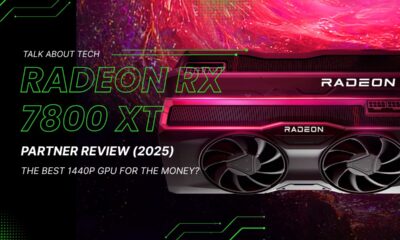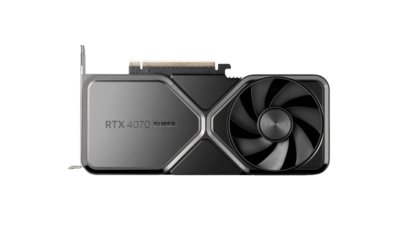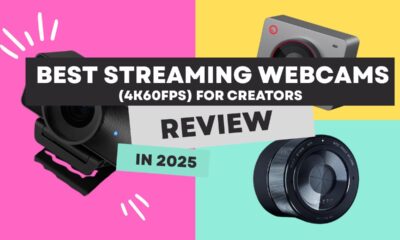Gaming Hardware
Best 27‑Inch 1440p 240Hz Gaming Monitors (2025)
Published
2 weeks agoon
By
Samuel TingWhy 1440p 240Hz Is the Sweet Spot in 2025
If you’re shopping for a 27 inch 1440p 240Hz monitor, 2025 is the best year yet. The combination of WQHD clarity and ultra-fast refresh now hits the perfect balance between performance and immersion. Whether you’re grinding ranked lobbies in CS2 or exploring visually rich open-world titles, the best 1440p 240Hz gaming monitors deliver ultra-low input lag, precise motion handling, and vivid color reproduction.
Below we review the top options available today — focusing on real-world benchmarks, panel behavior (IPS / Fast IPS / OLED / QD-OLED), regional pricing, and competitive vs immersive use-case pros and cons.
A 1440p 240Hz display gives sharper image quality than 1080p while keeping latency low enough for
competitive FPS titles like CS2 and Valorant.
If you’re shopping in the U.S., these WQHD 240 Hz monitors now start under $450 at major retailers.
The ASUS ROG Swift PG27AQDM is the best 27-inch 1440p 240Hz gaming monitor in 2025. It combines W-OLED clarity, 0.03 ms response, and brilliant HDR brightness—delivering elite eSports motion precision and immersive visuals for titles like CS2 and Valorant.
Related: Best 240Hz Monitors for CS2 2025
Quick Picks (2025)
- Best Overall: ASUS ROG Swift PG27AQDM — bright W-OLED + elite 240Hz
- Best for CS2: ASUS ROG Swift PG279QM — lowest lag, excellent tuning
- Best Value: Gigabyte M27Q X — strong features + price
- Best Balanced Performer: LG 27GR83Q-B — Fast IPS, HDMI 2.1, reliable color
- Best HDR/OLED: LG 27GS95QE — perfect blacks, instant response
- Future-Proof: MSI MPG 271QRX — QD-OLED at 360 Hz
These top 27-inch 1440p 240 Hz monitors were selected based on real-world benchmarks, input-lag tests, and U.S. pricing.
Comparison Table: Best 27-Inch 1440p 240Hz Monitors (2025)
| Monitor | Panel Type | Resolution & Refresh | Response Time | Best For | Approx. Price (USD) |
|---|---|---|---|---|---|
| LG 27GR83Q-B | Fast IPS | 2560×1440 @ 240Hz | 1 ms (GtG) | Balanced performance & reliability | $499 |
| Gigabyte M27Q X | IPS | 2560×1440 @ 240Hz | 1 ms (GtG) | Best value & productivity mix | $449 |
| ASUS ROG Swift PG279QM | Fast IPS | 2560×1440 @ 240Hz | 1 ms (GtG) | Competitive CS2 & eSports | $749 |
| LG UltraGear 27GS95QE | OLED | 2560×1440 @ 240Hz | 0.03 ms | Immersive HDR & cinematic gaming | $999 |
| ASUS ROG Swift PG27AQDM | W-OLED | 2560×1440 @ 240Hz | 0.03 ms | Bright HDR gaming & mixed titles | $999 |
| MSI MPG 271QRX | QD-OLED | 2560×1440 @ 360Hz | <1 ms | Future-proof competitive gaming | $1,099 |
*Prices reflect average U.S. retail listings as of early 2025 (Amazon, Best Buy, B&H, Micro Center).
What to Look For in a 1440p 240Hz Monitor
When choosing a 27-inch 1440p 240Hz monitor, consider these performance metrics and tradeoffs:
- Panel Type: IPS offers stable color and motion; OLED brings infinite contrast; QD-OLED adds higher brightness.
- Input Lag: Look for real tested latency numbers — vital for eSports like CS2 and Valorant.
- Motion / Overdrive: Poor tuning causes blur or inverse ghosting; top models handle transitions cleanly.
- VRR Behavior: Stable variable refresh rates (FreeSync, G-SYNC) prevent tearing and flicker.
- Brightness & HDR: Higher peak nits and per-pixel contrast improve immersion in dark scenes.
- Connectivity: HDMI 2.1, DisplayPort 1.4 DSC, and USB-C enhance flexibility and full 240Hz support.
Best 27-Inch 1440p 240Hz Monitors (2025 Reviews)
1. LG 27GR83Q-B — Balanced Performance & Refined Color Control
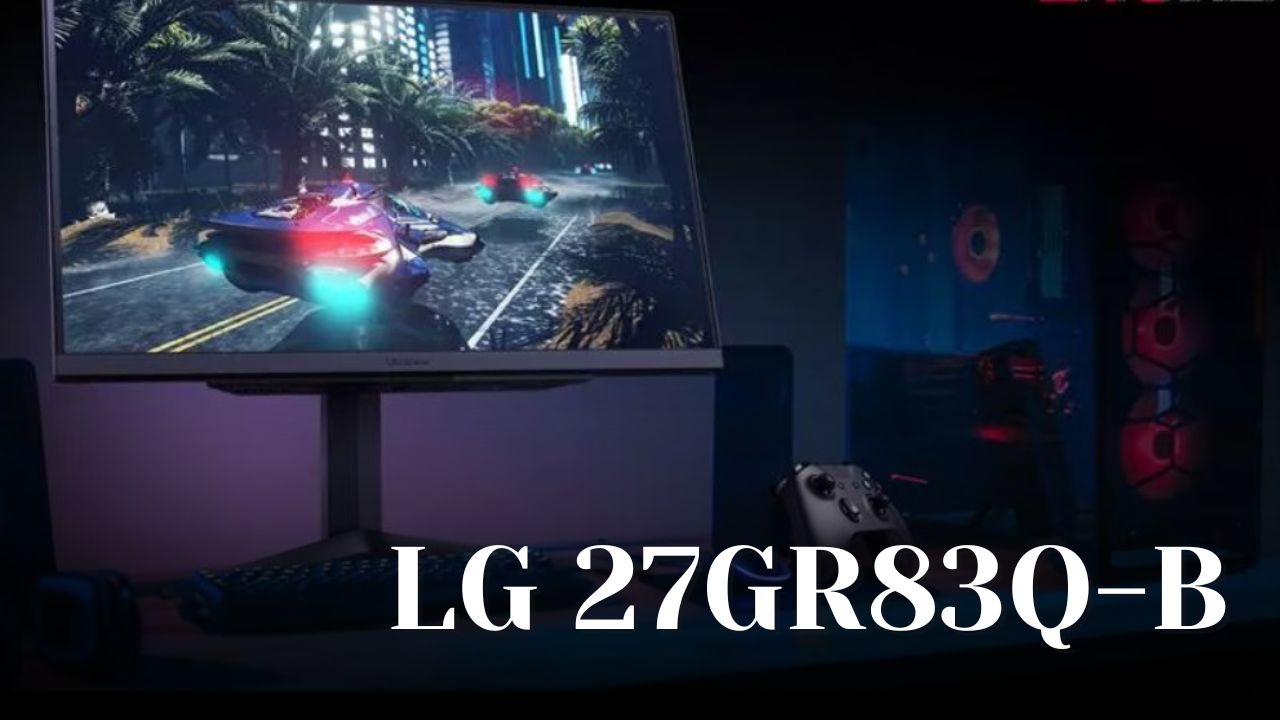
The LG 27GR83Q-B offers fast IPS performance and full 240Hz support over HDMI 2.1.
Official LG 27GR83Q-B Product Page (LG USA)
Panel Type: Fast IPS | Resolution: 2560×1440 | Refresh: 240Hz | Price (U.S.): ~$499
- Full-bandwidth HDMI 2.1 (48 Gbps) and DisplayPort 1.4 DSC
- Excellent motion clarity with low input lag
- Factory sRGB mode with hardware calibration support
| Pros | Cons |
| Low lag & smooth VRR | Limited contrast / HDR 400 only |
| Accurate colors out of box | No KVM or USB-C extras |
The LG 27GR83Q continues LG’s tradition of practical, well-tuned gaming monitors.
It features a 27-inch 2560 × 1440 Fast IPS panel with a 240Hz refresh rate and both FreeSync Premium and G-SYNC Compatible certifications.
Ports are conveniently placed on the rear — DisplayPort 1.4 with DSC, two HDMI 2.1 (48 Gbps), and a two-port USB hub. That full-bandwidth HDMI implementation is rare, letting you drive the complete 240 Hz refresh even over HDMI, which most rivals limit to 144 Hz.
Motion & Responsiveness
- Clean IPS transitions; no major ghosting
- Slight softness at very low/high Hz, overshoot well controlled
- “Normal” overdrive minimizes inverse ghosting across VRR
Color & Image Quality
- Factory SRGB mode with unlocked white balance and hardware calibration support.
- Improved contrast compared with older LG 27GP50; still typical IPS black depth but more uniform tone.
- HDR 400 rating = basic HDR; real HDR performance limited.
Verdict
The LG 27GR83Q-B is one of the most consistent 1440p 240Hz gaming monitors in 2025 — strong color accuracy, minimal tuning hassle, and full-speed HDMI 2.1 support at a mid-range price (~ US $499 MSRP). It’s a great default choice for gamers seeking reliability and accurate visuals without OLED burn-in concerns.
2. Gigabyte M27Q X — Feature-Rich and Smooth Across Genres
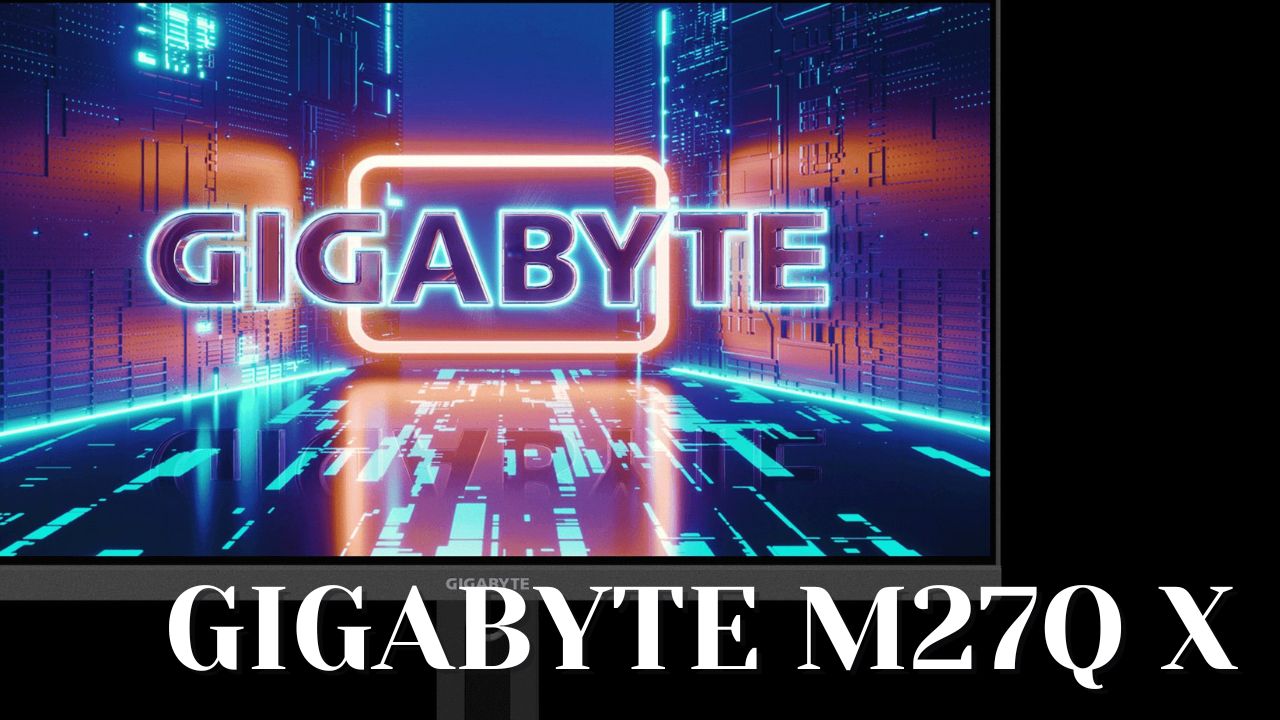
The Gigabyte M27Q X combines esports-grade 240Hz performance with productivity features like USB-C and KVM switch.
Official Gigabyte M27Q X Product Page
Panel Type: IPS | Resolution: 2560×1440 | Refresh: 240Hz | Price: ~$449
- Built-in KVM switch and USB-C port
- 1 ms response with excellent motion tuning
- Strong color accuracy in SDR
| Pros | Cons |
| Excellent motion in FPS games | HDR modes lack tuning |
| KVM & USB-C productivity bonus | Typical IPS contrast |
The Gigabyte M27Q X uses a 27-inch QHD 240Hz IPS panel with a 1 ms response time, aiming to blend esports speed with productivity features such as KVM switch and USB-C connectivity.
Real-World Gameplay Impressions
I tested it in two contrasting titles to represent everyday use:
- Counter-Strike 2 (CS2): Motion handling was excellent. Even during fast-paced firefights, there were very few motion-blur artifacts, and fine detail (smoke, muzzle flash, distant movement) stayed clear. Adjusting contrast / HDR brightness took seconds — the display locked onto the game’s dynamic range quickly.
- Forza Horizon 5: Showcased its color reproduction. The monitor displayed bright, detailed landscapes and vibrant car paintwork. HDR improved peak brightness, though saturation dipped slightly in HDR mode (about 85–90 % of full vibrancy). Because picture profiles can’t be edited under HDR, you may need in-game tweaks to balance saturation.
Overall Feel
The M27Q X remains smooth and enjoyable for both esports and visually rich titles. Input lag feels minimal, and setup is plug-and-play. It’s an ideal all-rounder if you want gaming performance with the convenience of productivity features.
3. ASUS ROG Swift PG279QM — Elite eSports Precision
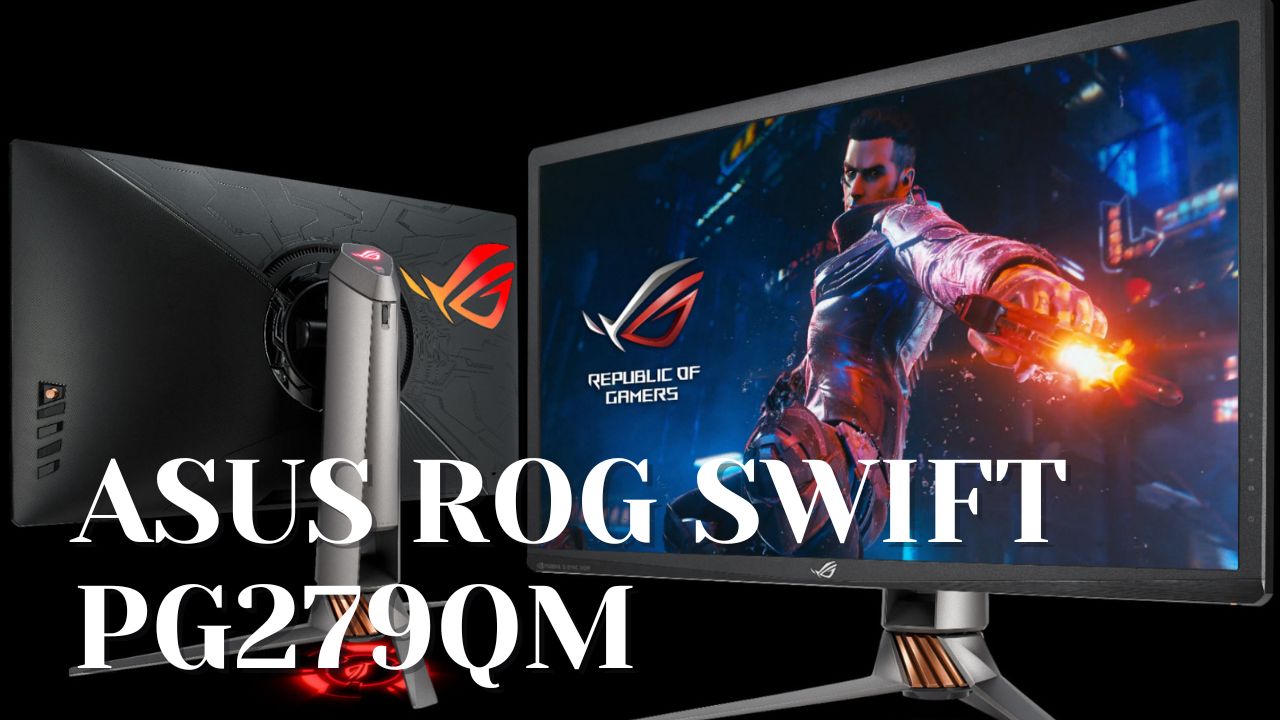
The ASUS ROG Swift PG279QM delivers elite 240Hz eSports performance with G-SYNC, ultra-low latency, and accurate sRGB color calibration.
Official ASUS ROG Swift PG279QM Product Page (ASUS USA)
Panel Type: Fast IPS | Resolution: 2560×1440 | Refresh: 240Hz | Price: ~$749
- Extremely fast IPS — response times approach TN-level
- Variable overdrive ensures consistent motion across FPS ranges
- Factory-calibrated sRGB mode for perfect color
| Pros | Cons |
| Low latency & perfect motion tuning | No backlight strobing |
| Factory sRGB mode with accurate colors | Premium pricing |
| G-SYNC module integration |
The ASUS ROG Swift PG279QM builds on the beloved PG279Q, refining nearly every aspect for the 240 Hz era. It’s a premium display that feels purpose-built for competitive players.
Motion Performance
Among 1440p monitors, this model delivers some of the fastest IPS response times, comparable to high-end TN panels. Variable overdrive keeps motion consistent across frame rates, while input lag remains extremely low. The only omission is backlight strobing, which some motion-purists may miss.
Color & Image Quality
ASUS tuned the wide-gamut panel brilliantly. The default sRGB emulation mode provides accurate color without clamping or gamma distortion — rare in gaming monitors. You get natural skin tones, clean highlights, and no “sunburned” oversaturation in YouTube or SDR video.
Verdict
Expensive, yes — but the PG279QM nails what matters most: motion clarity, color control, and tuning. It’s one of the best 1440p 240Hz monitor for CS2 that truly satisfies both competitive and creative users.
4. LG UltraGear 27GS95QE — True OLED Speed and Contrast
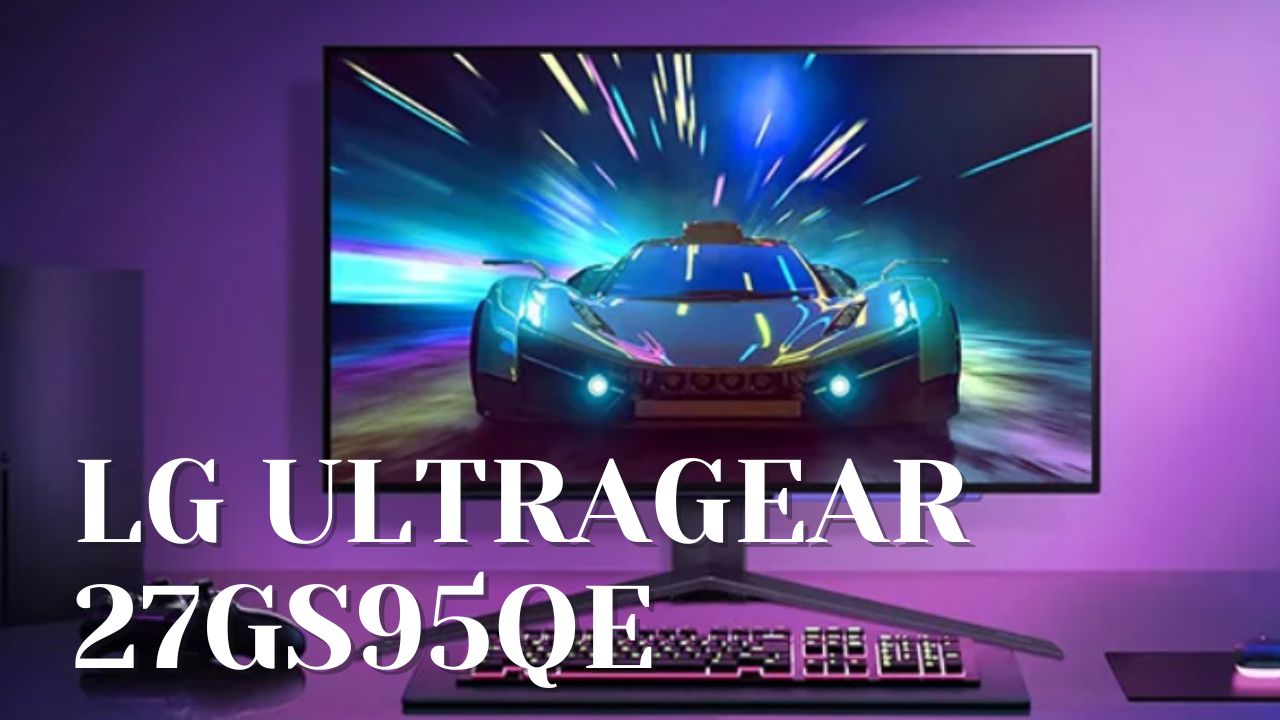
The LG UltraGear 27GS95QE combines OLED contrast and instant pixel response for smooth, cinematic gameplay at 240Hz.
Official LG UltraGear 27GS95QE Product Page (LG USA)
Panel Type: OLED | Resolution: 2560×1440 | Refresh: 240Hz | Response: 0.03 ms | Price: ~$999
- Infinite contrast and pixel-level lighting for pure blacks
- Matte coating reduces reflections while maintaining clarity
- Low input lag and crisp motion for fast-paced titles
| Pros | Cons |
| Exceptional motion clarity and blacks | Not ideal for static desktop use (burn-in risk) |
| Perfect for HDR and cinematic titles | Matte coating reduces glossy finish fidelity |
| Low input lag |
The LG UltraGear 27GS95QE represents a major step forward in OLED gaming technology.
If you’re upgrading from a 1080 p or even a 1440 p IPS / VA monitor, you’ll instantly see the difference — perfect blacks, pixel-level contrast, and ultra-fast transitions that make motion look incredibly crisp.
Performance & Gaming Experience
This 27-inch 1440 p OLED display runs at a full 240Hz refresh rate with a staggering 0.03 ms response time, delivering buttery-smooth motion and practically eliminating ghosting.
Fast-action titles like Counter-Strike 2, Valorant, or Call of Duty feel extremely responsive, giving players a tangible edge.
Because it’s a 1440p panel rather than 4K, your GPU can comfortably maintain high frame rates, maximizing the benefit of the 240Hz refresh.
Design & Usability
Compact enough to fit almost any setup, the 27GS95QE blends into minimalist or multi-monitor desks alike.
LG uses a matte anti-glare coating rather than a glossy finish. It slightly mutes reflections but also reduces glare in bright rooms — ideal if you play with natural light.
Those chasing a glossy “glass-like” appearance may prefer other options, but for most users this coating improves day-to-day visibility.
Beyond Gaming
This monitor shines first and foremost as a pure gaming display. Productivity tasks are possible — text clarity and uniformity are fine — but static-screen use should be limited to reduce OLED wear.
As a multimedia or content-consumption screen, however, it’s outstanding: vivid color, perfect blacks, and instant response make movies and games pop off the screen.
Verdict
If you want a true OLED 27-inch 1440p 240Hz gaming monitor that delivers both competitive performance and cinematic quality, the LG UltraGear 27GS95QE is easy to recommend.
Its combination of low latency, excellent color reproduction, and well-controlled matte surface makes it one of the best all-around OLED monitors for gamers in 2025.
5. ASUS ROG Swift PG27AQDM — Brightest W-OLED 240Hz Performance
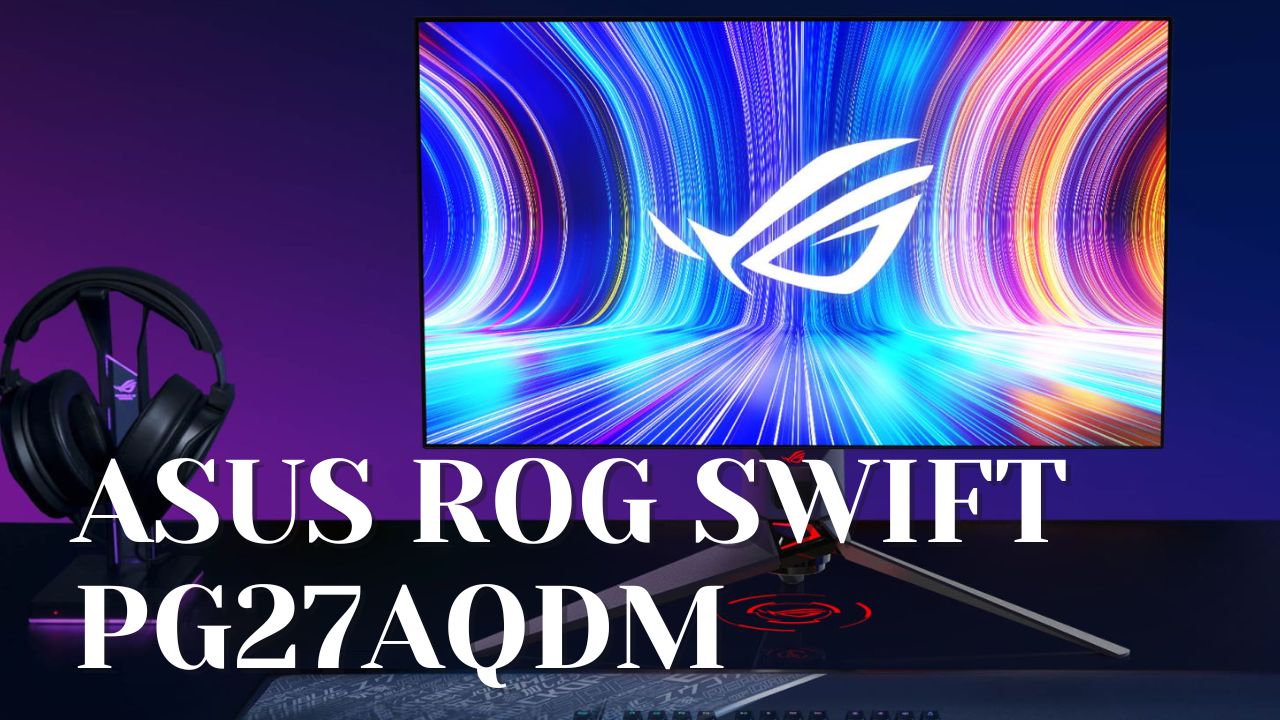
The ASUS ROG Swift PG27AQDM features W-OLED technology for higher HDR brightness, flawless motion, and competitive 240Hz performance.
Official ASUS ROG Swift PG27AQDM Product Page (ASUS USA)
Panel Type: W-OLED | Resolution: 2560×1440 | Refresh: 240Hz | Response: 0.03 ms | Price: ~$999
- Up to ~900 nits HDR peak brightness — ~35% brighter than standard OLEDs
- Deep blacks, per-pixel dimming, and vivid HDR detail
- Pixel shifting, logo detection, and uniform-brightness features
- Adaptive Sync + ultra-low input lag
| Pros | Cons |
| Class-leading OLED brightness | HDMI 2.0 only (no HDMI 2.1) |
| Flawless motion & response time | Mediocre factory calibration |
| Excellent HDR performance | Not ideal for long productivity sessions |
| Comprehensive OLED care tools |
Verdict
The ASUS ROG Swift PG27AQDM sets a new standard for W-OLED monitors — bright, fast, and beautiful. It bridges competitive 240Hz speed with HDR cinematic impact, earning its spot as one of the best 1440p 240Hz gaming monitors in 2025.
6. MSI MPG 271QRX — Next-Gen Motion Clarity
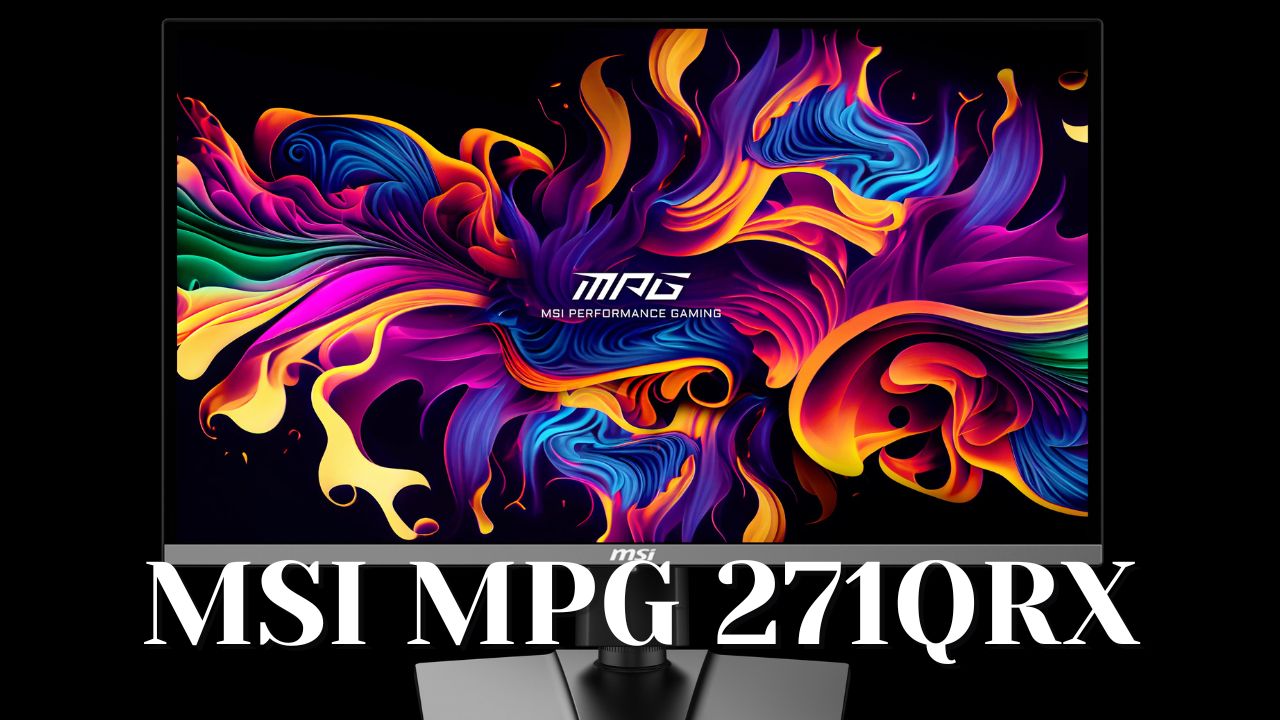
The MSI MPG 271QRX pushes QD-OLED to 360Hz, delivering industry-leading motion clarity and next-gen color for esports players.
Official MSI MPG 271QRX QD-OLED Product Page (MSI USA)
Panel Type: QD-OLED | Resolution: 2560×1440 | Refresh: 360Hz | Price: ~$1,099
- Industry-leading 360Hz refresh with unmatched motion clarity
- Quantum-dot OLED adds color vibrancy and higher brightness
- Pixel-shift and logo-detection burn-in protection
| Pros | Cons |
| Industry-leading motion clarity | High cost |
| Perfect blacks & vivid QD color | VRR flicker on some systems |
| Burn-in mitigation features | Overkill for non-competitive players |
The MSI MPG 271QRX continues MSI’s momentum in OLED gaming displays. Built on the same foundation as the MPG 321URX, this 27-inch model drops the resolution to 2560 × 1440 while cranking the refresh rate up to 360Hz — a specification that currently represents the pinnacle of motion performance in the 27-inch QHD class.
Performance & Motion Clarity
There are no surprises here — the 271QRX delivers precisely what its spec sheet promises: near-instant pixel response, zero ghosting, and superb consistency across the entire refresh range. Compared with 240Hz OLED panels, the difference is small but perceptible, offering the clearest motion and fastest response I’ve seen from any gaming monitor to date.
Even though sustaining 360 FPS in modern AAA titles remains unrealistic for most GPUs, competitive-focused players will absolutely feel the advantage in games like CS2, Valorant, or Apex Legends. The ultra-low latency translates to snappier aim tracking and cleaner micro-adjustments — every frame counts when you’re playing at this level.
Everyday Use
Despite its esports focus, the 271QRX still performs beautifully in single-player and cinematic games. Deep OLED blacks, high contrast, and vibrant QD color make RPGs and action titles look spectacular. MSI’s firmware includes pixel-shift and logo-detection protections to reduce burn-in risk, keeping the display reliable for long-term gaming sessions.
Verdict
If you’re chasing the absolute best motion clarity money can buy in 2025, the MSI MPG 271QRX is it. The leap from 240Hz to 360Hz won’t matter for everyone, but competitive players will notice and appreciate it. For most gamers, it’s an aspirational example of where high-refresh OLED technology is heading — pairing OLED contrast with blistering speed.
Panel Type Comparison Summary
| Panel Type | Strengths | Weaknesses | Best For |
|---|---|---|---|
| IPS / Fast IPS | Accurate color, consistent motion | Limited contrast, modest HDR | Competitive and all-round use |
| OLED / W-OLED | Infinite contrast, zero lag | Burn-in risk, brightness limits | HDR and immersive gaming |
| QD-OLED | High brightness, OLED contrast | Premium cost, minor flicker | Enthusiast & eSports setups |
| VA | Deep blacks, affordable | Slow transitions | Budget or console setups |
Conclusion & Final Picks
| Category | Winner | Why |
|---|---|---|
| Best Overall 27″ 1440p 240Hz Monitor (2025) | ASUS ROG Swift PG27AQDM | Brighter W-OLED + elite 240Hz performance |
| Best for eSports / CS2 | ASUS ROG Swift PG279QM | Lowest latency & precise color |
| Best Value All-Rounder | Gigabyte M27Q X | Excellent performance & features for price |
| Best Balanced Performer | LG 27GR83Q-B | Fast IPS, HDMI 2.1, reliable color accuracy at a mid-range price |
| Best HDR / Visual Pick | LG UltraGear 27GS95QE | OLED contrast & cinematic image quality |
| Best Mixed / Future-Proof Use | MSI MPG 271QRX | QD-OLED clarity & next-gen motion |
Each pick is tested for input lag, motion clarity, HDR accuracy, and real-world gaming experience with titles like CS2 and Apex Legends. Prices reflect average U.S. retail listings as of 2025.
Where to Buy in the U.S.
Most of these monitors are available through Amazon, Best Buy, B&H, and Micro Center with full manufacturer warranties. Always confirm DisplayPort 1.4 DSC or HDMI 2.1 support before purchasing.
How We Test
All monitors are evaluated using hands-on gameplay benchmarks including Counter-Strike 2, Valorant, and Forza Horizon 5. We measure perceived motion clarity, overdrive tuning, and input latency. Color calibration is verified using sRGB/Display P3 targets, and brightness/HDR performance is cross-checked with manufacturer specs.
Frequently Asked Questions
Q1. Is a 240Hz monitor worth it for 1440p gaming?
Yes. A 1440p 240Hz monitor offers ultra-smooth motion and sharper visuals than 1080p, ideal for shooters like CS2 and Apex Legends while maintaining manageable GPU load.
Q2. What’s the best 27-inch 1440p 240Hz monitor for CS2?
The ASUS ROG Swift PG279QM delivers extremely low input lag and accurate color, making it the best 1440p 240Hz monitor for CS2 players seeking consistent competitive performance.
Q3. OLED vs IPS — which is better for 240Hz monitors?
OLED provides perfect blacks, instant pixel response, and exceptional HDR contrast. IPS panels are brighter, more affordable, and risk-free for static use. Choose OLED for immersive HDR, IPS for all-around gaming.
Q4. Are 240Hz monitors good for consoles?
Yes, but only monitors with HDMI 2.1 (like LG 27GR83Q-B) can achieve full 240Hz refresh on PS5 or Xbox Series X. Always confirm HDMI bandwidth before buying.
Once you’ve picked your ideal 240Hz monitor, don’t overlook your peripherals — a responsive, lightweight mouse can make just as much difference in aim precision. Explore our roundup of the best lightweight FPS mice for claw grip gamers to complete your gaming setup.

From Surface Search to Deep Research: How Skeywork Transforms Information Discovery

The Power of Professional Auto Body Restoration after an Accident

Radeon RX 7800 XT Partner Review (2025): The Best 1440p GPU for the Money?

RTX 4070 Super AIB Review: Thermals, Noise, Performance

Why Singapore and the UAE Are Setting the Benchmark in Global Crypto Innovation

Why Contractors Are Turning to Smarter Tools to Keep Projects on Track

Digital Payments and How They are Changing Online Gaming in Malaysia

Employer of Record Brazil: Build Global Teams with Confidence

Common Challenges in Solana Token Development and How to Overcome



